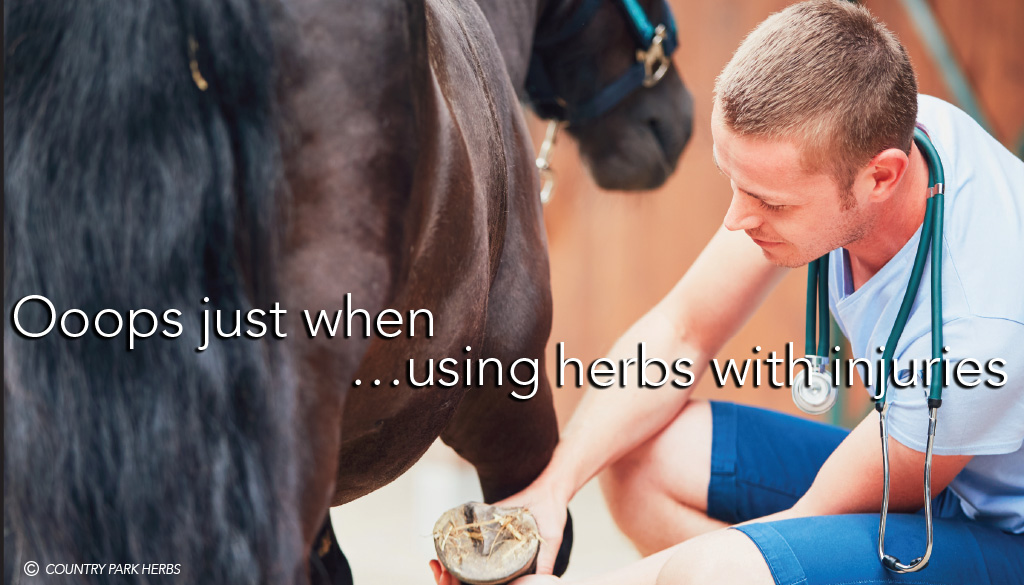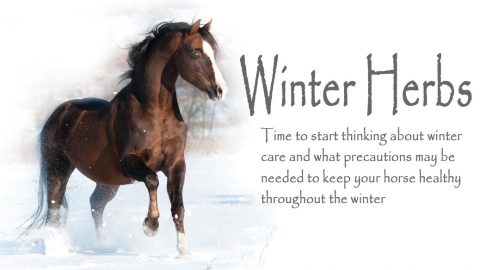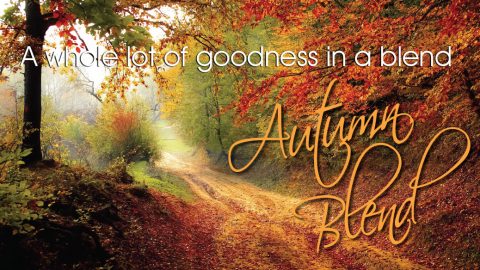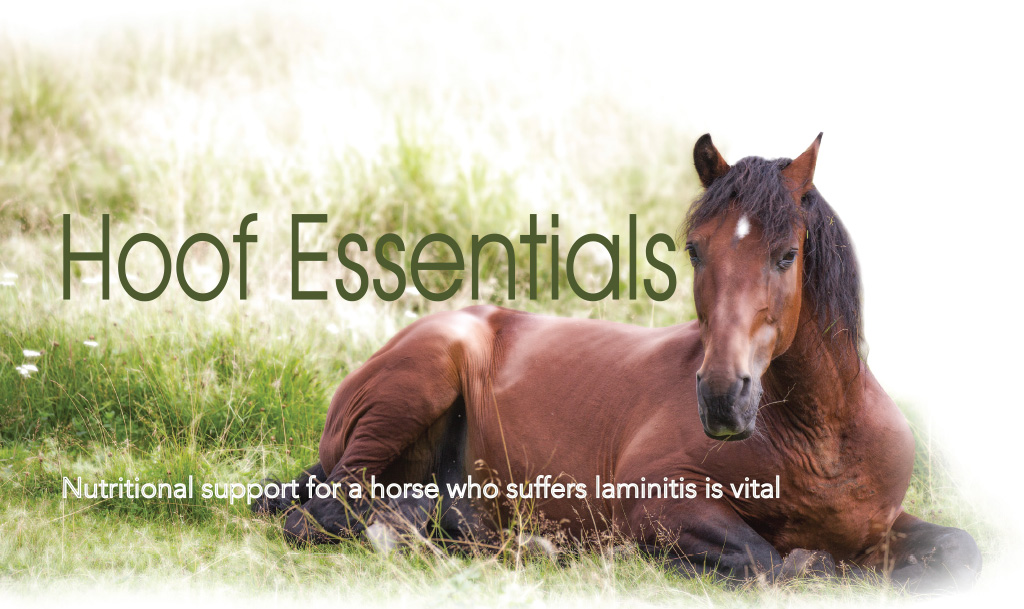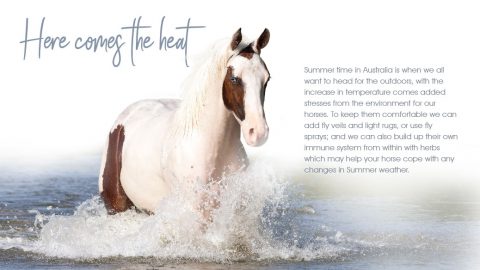The kids are back at school and you have time to ride again. Just as you are getting back into work, there is a mishap. Herbs are useful additives to feed and may aid with injury recovery as they can help the body address inflammation and they can assist with restoring tissue integrity after a trauma has been experienced.
With any soft tissue injury, especially if there is inflammation and broken skin, Calendula (Calendula officinalis) can offer anti inflammatory and anti microbial activity. It can be given internally to help the lymphatic system work more efficiently to deal with infection and assist with tissue repair. It can be made into a tea or placed in a poultice to clean open wounds.
If infection has established itself in a wound, Echinacea (Echinacea purpurea) has been traditionally used for septic wounds, boils and abscesses. If your horse has become rundown while recovering from an injury, echinacea can help rebuild his strength and restore health after the tissue has been affected by the inflammatory response in the body.
Often four to six weeks of Nettles (Urtica diotica) after a debilitating issue where your horse has been restricted to a stable to recover, can help as a ‘pick me up’ and combines well with echinacea to give your horse an interested and ‘back to it’ attitude.
Clivers (Galium aparine) will help strengthen the feet, and is a lymphatic herb that targets abscesses. If your horse gets a stone bruise adding clivers to the feed will help lessen the time the bruise is sore to walk on.
Rosehips (Rosa canina) contain flavonoids that assist with tissue repair, and is also a herb that addresses mild infections and inflammations. A common feed additive, if your horse is on rosehips when he injures himself, increase his daily dose while you work out what other approaches will best serve his recovery. A rosehips and clivers combination is one of the best ways to bring up a dull coat after being out in the Summer sun.
Yarrow (Achillea millefolium) again has anti inflammatory actions and is good when it comes to recovery after musculoskeletal damage has occurred. It is an unusual herb as it stimulates circulation so blood flow can be increased to assist with healing, while it also has an ability to control excessive bleeding.
Turmeric (Curcuma longa) is a helpful herb with low grade inflammation often stirred up by coming back into work, and with its liver support helps with the elasticity of tendons and ligaments and combines well with Rosehips to maintain overall myofascia tissue integrity.
If your horse suffers more severe muscle soreness or azoturia, supporting the liver with Dandelion root powder(Taraxacum officinale) can help lessen the severity if given as a regular additive.
When tendons and ligaments are involved with an injury, one herb that is a must is Gotu kola (Centella asiatica). It will assist with wound healing, be it fresh or chronic damage that has been slow to heal and it also contains a unique collagen stabilising action.
When your horse has worked hard and suffers muscle spasms, Chamomile (Matricaria recutita) has a reasonable magnesium content that helps feed the muscle so that the spasms ease out with body work. Adding chamomile to the feed for two to three days after a massage can help your horse get even more benefit from the hands-on work.
Normal aches and pains when coming back into work can be expected. If your horse has a repetitive ache or strain, don’t forget to get the trimming of the hoof checked with tendon and ligament issues, or the saddle checked in relation to sore back issues.
With most lameness it always a good idea to have your veterinarian examine any injury to ensure you know the extent of the injury. If your veterinarian recommends bute when the injury occurs, these gentle herbs should be okay to give concurrently, just check with your veterinarian if you are unsure or if other medications are prescribed.
There is a small amount of salicylates in calendula and yarrow making a test for prohibited substances possible, so best to avoid feeding in the week leading up to a competition. Chamomile is also listed in some rules as prohibited.
Keep your approach simple, when combining the above herbs most will help in tablespoon or handful amounts, and your horse will enjoy the added extras in his feed.
For correct dosage rates on the herbs mentioned in this article please contact Carol or Ruth when placing your order.
Disclaimer: The information provided in this article is for educational purpose only and is not meant to replace veterinary advice or treatment.
Copyright: Catherine Bird, who is also the author of a Healthy Horse the Natural Way, has been an equine natural therapist for 27years working closely with Country Park Animal Herbs for over 13 years offering advice to their clients.

